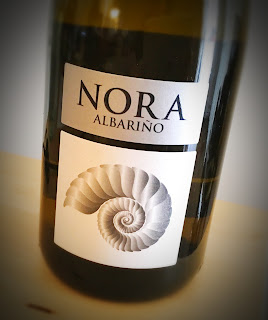From importer González Byass.
Bodegas Beronia is known for its Rioja Alta vineyards. The winery was formed by several Basque friends who wanted to have just the right wine to go with their culinary get-togethers. Now that's a bunch of choosy wine drinkers. The beautiful state of the art revamp on the winery is only a couple of years old. Winemaker Matías Calleja puts his signature on the label of each bottle.The 2017 Beronia Reserva has three grape varieties in it, 95% Tempranillo, 4% Mazuelo and 1% Graciano. The winery says that the vines are all more than 40 years old. The wine was aged in oak barrels for eighteen months and in the bottle for another year and a half. Alcohol sits at 14.5% abv and the retail price is $25.
This is a dark wine,black cherry red but almost opaque. Black fruit abounds on the nose, joined by notes of anise, mocha, cinnamon and clove. The palate is jammy, with spices and herbs making themselves clearly known. A savory aftertaste lingers on the long finish and the tannins are a bit toothy upon opening, so be sure to decant before serving.
The 2013 Beronia Gran Reserva is a blend of 97% Tempranillo and 3% Graciano grapes, from old vines. The wine was aged for more than two years in French oak barrels and then another similar time frame in the bottle. Alcohol hits 14.5% abv and the retail price is $30.
The nose offers black fruit - plums, currant, blackberries - and a savory spice and herb rack featuring pepper, anise, cinnamon, clove and sage. On the palate, there's plenty of dark fruit and more savory touches. The tannins are firm and the acidity is refreshing, while the finish lasts a good long while.
Follow Randy Fuller on Twitter






